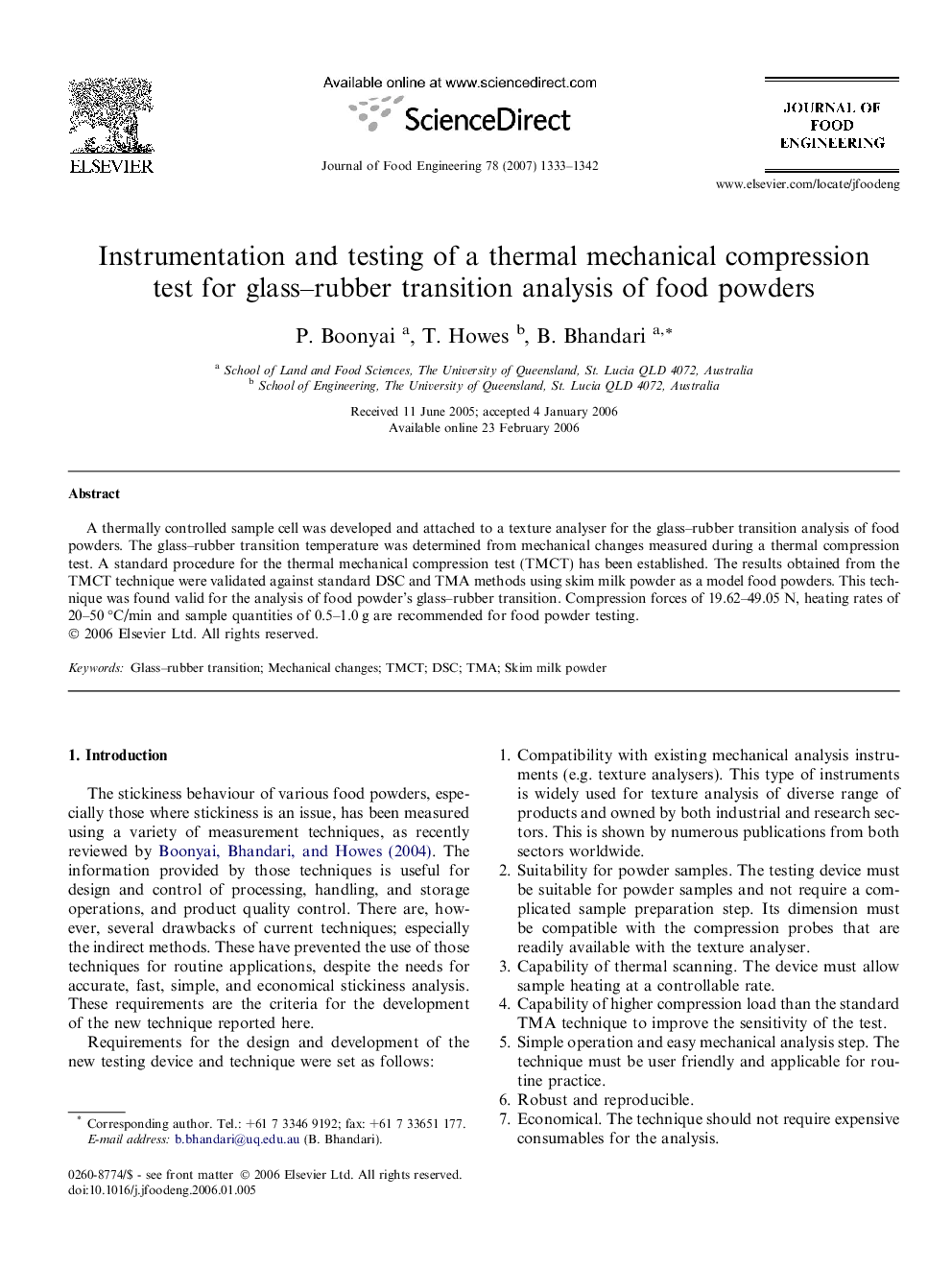| Article ID | Journal | Published Year | Pages | File Type |
|---|---|---|---|---|
| 226405 | Journal of Food Engineering | 2007 | 10 Pages |
Abstract
A thermally controlled sample cell was developed and attached to a texture analyser for the glass–rubber transition analysis of food powders. The glass–rubber transition temperature was determined from mechanical changes measured during a thermal compression test. A standard procedure for the thermal mechanical compression test (TMCT) has been established. The results obtained from the TMCT technique were validated against standard DSC and TMA methods using skim milk powder as a model food powders. This technique was found valid for the analysis of food powder’s glass–rubber transition. Compression forces of 19.62–49.05 N, heating rates of 20–50 °C/min and sample quantities of 0.5–1.0 g are recommended for food powder testing.
Keywords
Related Topics
Physical Sciences and Engineering
Chemical Engineering
Chemical Engineering (General)
Authors
P. Boonyai, T. Howes, B. Bhandari,
